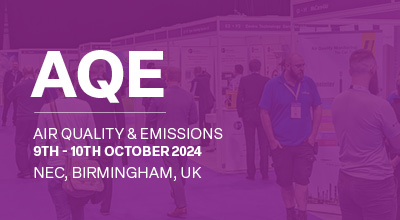| Abstract Title: | Investigating fleet emission characteristics using enhanced technical inspection procedures |
| Presenter Name: | Dr Daisy Thomas |
| Company/Organisation: | 3DATX Corporation |
| Country: | United Kingdom |
Abstract Information :
Improving ambient air quality is one of the greatest environmental challenges that the world faces today. Levels of NOx and particulate matter in many cities regularly exceed air pollution limits. Transportation is the greatest contributor to air pollution in urban centres, where the greatest human exposure occurs. A disproportionate amount of air pollution originates from a small number of high emitters, which could be identified through inspection procedures. However, the current European Union methods of Periodic Technical Inspection (PTI) are out of date, with no tests for PN or NOx emissions. There is some progress to this end, with PN being included in some member state PTI regulations, and groups working to incorporate NOx testing. In the present study, vehicle and tailpipe emissions data was collected using the parSYNC® iPEMS from over 600 light passenger vehicles simulating an enhanced Periodic Technical Inspection (PTI) emissions test to study NOx, PN and CO emissions. The vehicles were a random sample of passenger cars passing through a Swedish PTI test centre. These vehicles ranged from model years 1979 to 2019, covering the European emission standards Euro 1 to Euro 6, and included both gasoline and diesel fuel types of various engine powers and sizes. The enhanced PTI test conducted consisted of a low idle, high idle, free acceleration and dynamic acceleration test sections. This allowed the investigation of emissions resulting from a wider range of engine loads, increasing the representativity of the results. An investigation into the emissions trends from the tested vehicle fleet was performed using this dataset. The tailpipe concentrations of NOx, PN and CO were compared against vehicle make, model year, mileage and Euro standard. By comparing the average results from Euro 4, Euro 5 and Euro 6 vehicles as well as those Euro standards, it was ascertained that the PN from petrol vehicles needs tighter controls. The NOx from EURO-6 vehicles reverses the increase seen in EURO-5, but still fails to deliver the levels of reductions in real-world emissions as per the emissions standards. There is a stark improvement in diesel NOx emissions from post-RDE vehicles, however it appears that there is gradual linear degradation in the performance of selective catalytic reduction with use on Euro 6 diesel vehicles. Some degradation in PN emissions from diesel vehicles is also seen with age, but this appears to be tempered by the introduction of particulate filters. The results demonstrate the potential for an enhanced PTI emissions test to not only identify high emitters within vehicle fleets, but also to be used as a tool to investigate fleet emission characteristics more generally, thereby aiding our understanding of factors affecting ambient air quality. Regulators could use this data to evaluate the efficacy of current regulations and implement more effective standards in future. Furthermore, results from the parSYNC® iPEMS measurements can be used to create real-driving emissions databases, where CO2 measurement combined with the CO2e (equivalence) values for the toxic emissions provides a powerful tool for assessing carbon reductions in on-road vehicle fleets.



